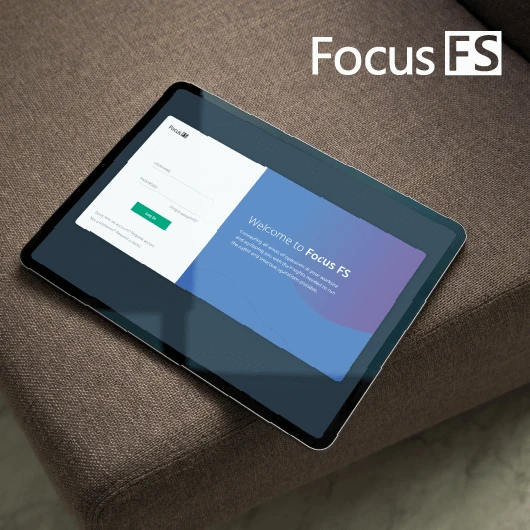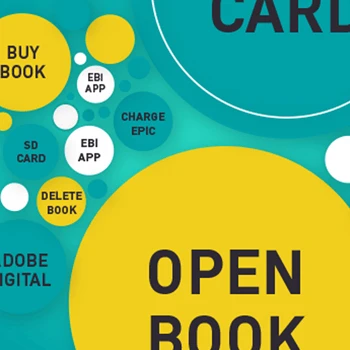What is the Experience Thinking workshop and how does it differ from typical UX training?
Experience Thinking workshops teach teams to design connected experiences across brand, content, product, and service quadrants. Unlike traditional UX training that focuses on individual skills, our workshops emphasize holistic thinking and collaborative problem-solving across disciplines to create seamless end-to-end experiences.
Tip: Evaluate whether training addresses isolated skills or teaches integrated experience design across touchpoints.
Who should attend Experience Thinking workshops?
Workshops benefit multi-disciplinary teams including business analysts, designers, product managers, product owners, developers, marketers, and executives. We design for mixed skill levels, from those with limited UX knowledge to experienced practitioners seeking to integrate Experience Thinking into their processes.
Tip: Include diverse roles in workshops - breakthrough insights often come from unexpected perspectives.
What practical skills will participants gain from the workshop?
Participants learn to empathize with users, map key experience journeys, identify pain points across touchpoints, design connected solutions, and apply research techniques. They gain hands-on experience with tools like journey mapping, personas, and service blueprints while tackling real-life challenges.
Tip: Focus on workshops that provide practical tools you can apply immediately, not just theoretical knowledge.
How do Experience Thinking workshops address organizational silos?
Workshops bring together stakeholders from different departments to collaborate on shared challenges. Through multi-disciplinary exercises, participants discover how their work impacts others and learn techniques for breaking down silos to create cohesive experiences.
Tip: Mixed-department attendance creates lasting connections that improve collaboration beyond the workshop.
What makes an experience 'remarkable' in your framework?
Remarkable experiences connect seamlessly across all touchpoints, anticipate user needs, and create emotional connections beyond functional delivery. Workshops teach how to identify and design these moments of delight while maintaining consistency across the complete journey.
Tip: Remarkable experiences emerge from understanding both functional needs and emotional desires.
How long are Experience Thinking workshops?
Core workshops run from a half day to two days, depending on depth and team requirements. Shorter workshops provide focused learning on specific topics, while the two day session offers multiple integrated modules.
Tip: Start with short workshops to build momentum, then pursue longer in-depth workshops for deeper expertise.
What's the balance between theory and practical application?
Workshops typically blend 60-80% theory with 20-40% hands-on practice, varying by topic. Even theory-heavy sessions use real examples and interactive discussions, while practical components involve working on actual challenges your organization faces.
Tip: The most effective learning combines understanding why (theory) with experiencing how (practice).
What specific topics are covered in Experience Thinking workshops?
Core topics include understanding experience characteristics, the four quadrants framework (brand, content, product, service), journey mapping, user research methods, information architecture, product design, persuasive design principles, and measuring experience success.
Tip: Choose workshops that address your immediate needs while building toward comprehensive understanding.
How do workshops teach the four quadrants of Experience Thinking?
Participants learn how brand, content, product, and service experiences interconnect and influence each other. Through exercises and case studies, they practice designing across quadrants to create multiplier effects where each element strengthens the others.
Tip: Understanding quadrant interactions helps identify which improvements will have the greatest overall impact.
What research techniques are included in the workshops?
Workshops cover contextual inquiry, user interviews, journey mapping validation, usability testing, and personas development. Participants learn when and how to apply each technique for maximum insight into user needs and behaviors.
Tip: Understand a few research techniques deeply rather than many superficially - quality insights beat quantity.
How is journey mapping integrated into workshop learning?
Journey mapping workshops teach participants to capture current and future state experiences, identify pain points and opportunities, validate maps with users, and use maps as innovation tools. Hands-on exercises use real scenarios to practice mapping techniques.
Tip: Effective journey maps become living documents that guide decisions long after workshops end.
What role does persuasive design play in the workshops?
Our persuasive design materials explore behavioral economics, design psychology, and ethical persuasion techniques. Participants learn Gestalt principles, cognitive laws, and tactics for designing experiences that guide behavior while respecting user autonomy.
Tip: Persuasive design should empower users to achieve their goals, not steer them against their interests.
What product design principles are covered?
Workshops teach how to prioritize user needs, define optimal experiences, create effective design patterns, and integrate product design into development processes. Participants practice creating flows that feel natural and support user goals efficiently.
Tip: Great product design anticipates user needs and provides clear paths to success.
What workshop delivery formats are available?
We offer in-person workshops in Canada, USA, the UK and EU plus several other regions (ask us!). An option is live online sessions via interactive platforms and learning through our management system. Each format maintains high engagement through different techniques suited to the medium.
Tip: Choose formats based on team distribution and learning preferences - remote teams often benefit from live online sessions.
How do virtual workshops maintain engagement and interaction?
Virtual workshops use breakout rooms, digital collaboration tools, interactive polls, and hands-on exercises adapted for online delivery. Experienced facilitators ensure all participants contribute through structured activities and varied engagement techniques.
Tip: Virtual workshops can be as effective as in-person when properly facilitated - technology enables rather than limits.
How are hands-on exercises structured in workshops?
Exercises progress from individual reflection to small group collaboration to full team synthesis. Participants work on real challenges using provided templates and frameworks, with facilitators guiding discovery rather than prescribing solutions.
Tip: Bring actual project challenges to workshops - applying learning to real problems accelerates understanding.
What's the typical class size for effective learning?
Workshops require a minimum of six participants for group dynamics and cap enrollment to ensure quality interaction. Optimal sizes range from 8-20 participants, allowing diverse perspectives while maintaining intimate discussion opportunities.
Tip: Smaller groups enable deeper discussion, while larger groups provide more diverse perspectives.
What technology requirements exist for virtual workshops?
Virtual workshops require stable internet, webcam, microphone, and access to collaboration tools. Laptops aren't required for in-person sessions as we provide necessary materials, though bringing devices can enhance note-taking and resource access.
Tip: Test technology before workshops to avoid disruptions - technical issues distract from learning.
How can workshops be customized for our organization?
Custom workshops adapt content, examples, and exercises to your industry, challenges, and maturity level. We work with you to identify specific learning objectives and design workshops that address your unique context while maintaining Experience Thinking principles.
Tip: Custom workshops accelerate adoption by using familiar examples and addressing specific organizational challenges.
What preparation maximizes workshop value for our team?
Prepare by identifying specific challenges, gathering relevant project examples, and ensuring diverse stakeholder participation. Pre-workshop surveys help customize content, while clear objectives ensure focused learning and application.
Tip: Teams that bring real challenges to workshops see immediate value through practical solutions.
How do workshops accommodate different UX maturity levels?
Workshops assume limited prior UX knowledge while providing depth for experienced practitioners. Multi-level exercises allow beginners to grasp fundamentals while advanced participants explore nuanced applications, ensuring value for all attendees.
Tip: Mixed experience levels enrich discussions - beginners ask fundamental questions experts overlook.
What organizational changes support workshop learning application?
Successful application requires executive support, dedicated time for practice, adjusted processes that incorporate new methods, and metrics that value experience quality. Workshops include change management guidance for sustainable adoption.
Tip: Plan organizational changes before workshops to create receptive environments for new approaches.
How do workshops address industry-specific requirements?
Drawing from experience across healthcare, finance, government, technology, and other sectors, workshops incorporate industry-relevant examples and constraints. Custom workshops can focus entirely on sector-specific applications of Experience Thinking.
Tip: Industry-specific examples accelerate learning but cross-industry insights often spark innovation.
What team size works best for organizational workshops?
Organizational workshops work best with 12-20 participants representing different departments and levels. This size enables meaningful cross-functional collaboration while remaining manageable for facilitation and logistics.
Tip: Include both decision-makers and implementers for balanced perspective and actionable outcomes.
How can multiple teams maintain consistency after separate workshops?
Create shared repositories for workshop outputs, schedule cross-team sharing sessions, and establish experience principles that guide all teams. Consider train-the-trainer approaches for scaling consistent understanding across large organizations.
Tip: Designate experience champions from each workshop to maintain alignment across teams.
What measurable outcomes can we expect from Experience Thinking workshops?
Organizations report improved customer satisfaction scores, reduced development rework, faster time-to-market, increased team collaboration, and higher success rates for new initiatives. Specific metrics depend on your baseline and application areas.
Tip: Establish baseline metrics before workshops to demonstrate improvement clearly.
How quickly will we see results from workshop learning?
Immediate benefits include improved team alignment and clearer project direction. Measurable customer experience improvements typically emerge within 3-6 months as teams apply learning to active projects. Long-term culture change builds over 12-18 months.
Tip: Quick wins from small applications build momentum for larger transformations.
What's the typical ROI timeline for workshop investments?
Direct ROI appears through reduced rework and faster project completion within months. Indirect returns through improved customer loyalty and team efficiency compound over years. Most organizations see positive ROI within 6-12 months.
Tip: Track both hard metrics (cost savings) and soft benefits (team morale) for complete ROI pictures.
How do workshops reduce project risk and failure rates?
Workshops teach early validation techniques that identify problems before expensive development. Teams learn to test assumptions, gather user feedback, and iterate designs cheaply, significantly reducing the risk of building unwanted solutions.
Tip: Every dollar spent on early validation saves ten dollars in late-stage fixes.
What competitive advantages do Experience Thinking workshops provide?
Organizations gain the ability to create differentiated experiences that competitors struggle to replicate. The holistic approach reveals opportunities others miss while building internal capabilities that accelerate innovation cycles.
Tip: Sustainable competitive advantage comes from organizational capability, not individual projects.
How do workshops impact employee satisfaction and retention?
Employees report increased job satisfaction from working on meaningful problems with clear user impact. Cross-functional collaboration reduces frustration while new skills increase career growth opportunities, improving retention.
Tip: Investing in employee development through workshops demonstrates organizational commitment to growth.
What cost savings result from Experience Thinking adoption?
Organizations save through reduced customer support calls, fewer development iterations, decreased project failure rates, and improved resource allocation. One prevented product failure can pay for years of workshop investments.
Tip: Track cost avoidance, not just direct savings - prevented problems have huge value.
How are workshops evolving to incorporate AI and emerging technologies?
Workshops increasingly address AI's role in research analysis, personalization, and design automation while emphasizing human creativity and empathy. Participants learn to use AI as a tool that amplifies human capabilities rather than replacing human-centered design thinking.
Tip: Stay current with technology while maintaining focus on human needs - tools change, but people remain central.
What future experience design trends do workshops address?
Current workshops explore conversational interfaces, multi-sensory experiences, ethical design considerations, and sustainable experience strategies. Content evolves continuously to address emerging challenges and opportunities in experience design.
Tip: Regular workshop attendance keeps skills current as the field rapidly evolves.
How do workshops prepare teams for unknown future challenges?
Rather than teaching specific solutions, workshops develop problem-solving frameworks and research capabilities that adapt to new challenges. Participants learn to think systematically about experiences regardless of technological or market changes.
Tip: Invest in thinking methods over specific techniques - principles outlast tools.
What role will Experience Thinking play as digital and physical merge?
Workshops increasingly address omnichannel experiences where digital and physical boundaries blur. Participants learn to design coherent experiences that flow seamlessly across all touchpoints, preparing for futures where this integration deepens.
Tip: Start practicing integrated thinking now - the future demands holistic experience design.
How do workshops address accessibility and inclusive design evolution?
Accessibility is woven throughout workshop content as a fundamental principle, not an add-on. Participants learn how inclusive design benefits all users and drives innovation, preparing for futures where accessibility is non-negotiable.
Tip: Treat accessibility as an innovation driver - constraints spark creative solutions.
What ongoing research informs workshop content updates?
Workshop content draws from Akendi's client work across 220+ organizations, academic research, industry trends, and participant feedback. Regular updates ensure relevance while maintaining proven foundational principles.
Tip: Choose training providers who practice what they teach through active client work.
How will Experience Thinking workshops adapt to post-pandemic work patterns?
Workshops embrace hybrid delivery models and address designing for distributed teams and remote users. Content includes managing virtual collaboration, asynchronous research methods, and creating connected experiences across physical distances.
Tip: New work patterns require new experience strategies - workshops help navigate this evolution.












